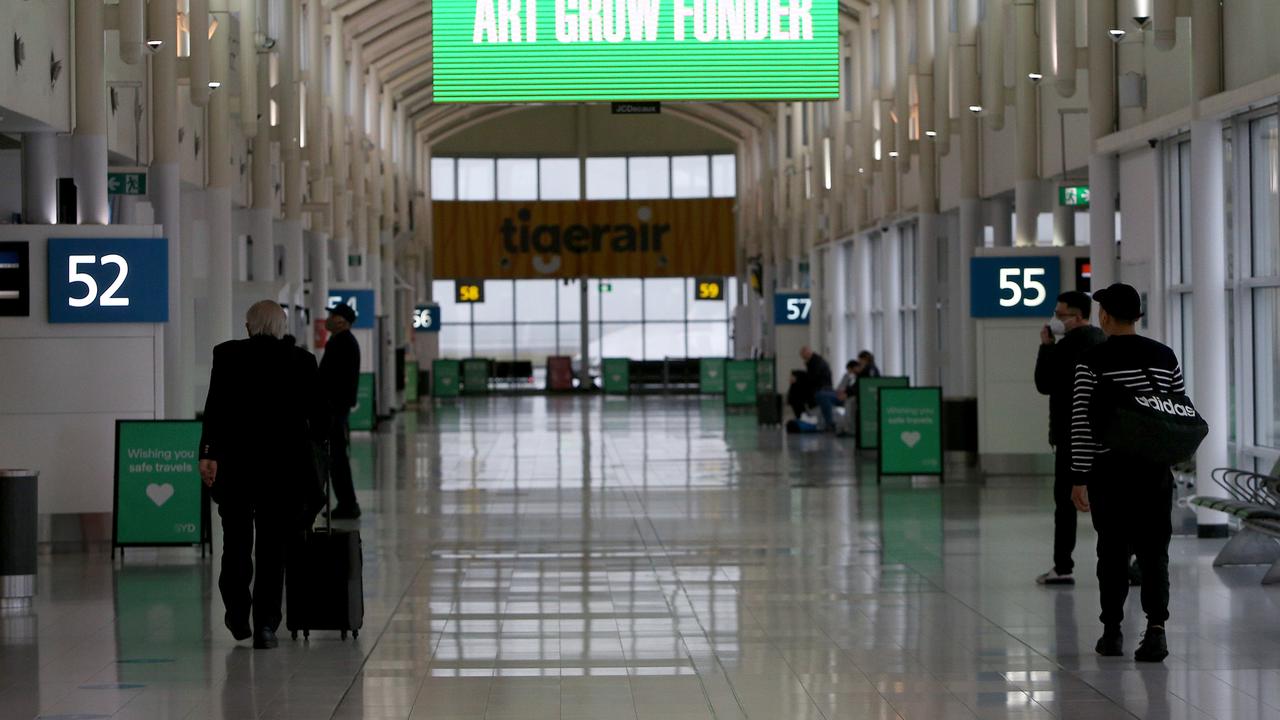US moves on rates will be felt at home
A US official interest rate rise is now an absolute certainty, barring only a catastrophic event over the next four days, writes Terry McCrann.

Terry McCrann
Don't miss out on the headlines from Terry McCrann. Followed categories will be added to My News.
LAST week I wrote we “should” see a US official interest rate rise this coming week. Now it is an absolute certainty, barring only a catastrophic event over the next four days.
While you might wonder why it matters all that much to you, in fact no single other event or policy change could be more important in determining your financial, investment and employment — and for businesses, operational — futures. Indeed, it could even decide where you next holiday.
All this will flow from an increase in an interest rate from almost zero to a little less than almost zero. Technically, it will be a move from a range of 0.5-0.75 per cent to
0.75-1 per cent — which will still leave it well below our extraordinarily low 1.5 per cent official rate.
In very simple terms, the US rate rise — and what follows — will determine what happens to Australian interest rates — both that official rate set by the Reserve Bank and the actual rates charged by the banks on home loans.
Next week’s increase and the further rises which could follow, possibly — probably — faster than most expect, will pretty much rule out any further cut in that RBA official rate. They will open the door, in fact, to it going up — but not, I should stress, any time soon.
The same, though, does not apply to bank home loan rates.
Yes, the banks raise the majority of their money (to fund home and other loans) from domestic depositors; and the rates they pay on those deposits are linked (but not
set absolutely) by the RBA official rate.
But they still raise 30-40 per cent of their money on global financial markets and the interest rate price they will have to pay for those funds will go up in line with the Fed rise, rises, plural.
So the blended cost of their money will rise even if the RBA sits on its hands all year. And that means home loan rates would rise as well.
Indeed, if Australia also lost its triple-A credit rating, those rises would probably be a little greater.
Now, the first test for our triple-A rating will be the Budget in two months’ time. I suggest Treasurer Scott Morrison will “do enough” to avoid a rating downgrade.
After that, we are in the hands of “events”.
Now, the US rate rise — which will be announced early Thursday morning our time — became a certainty after very strong US jobs numbers overnight Friday.
Their jobless rate fell to 4.7 per cent — ours, incidentally, is 5.7 per cent. Yet our official rate is significantly higher than the US.
No, that does not mean ours is “too high”, but that theirs is too low. That’s especially the case as they head into 2017 with an economy primed for strong growth because of eight years of super-low rates which have built massive wealth in shares and property assets.
And then add a president promising to supercharge the economy with a huge corporate tax cut (he wants to go from 35 to 15 per cent in one hit — he’ll probably end up “only” going to 20 per cent) and a massive infrastructure spending program.
Compare that rate cut, incidentally, with our attempt to go from 30 to 25 per cent — over 10 years; and we’re not even going to achieve that.
This is why we are going to see more and faster US rate rises. They will work to boost the US dollar (and send our dollar towards US70c). Other currency changes will follow.
As noted, they will pull global rates higher. And “normally” that would tend to send global share markets lower, ours especially included.
But we are going to see an arm-wrestle on Wall St between the confidence and economy-boosting — and so corporate profit-boosting — which will flow from the Trump moves versus the impact of higher rates, which make fixed-interest investments look better than shares. Wall St passed its first test overnight Friday when the Dow finished higher (after nervous trading through the rest of the week) after the jobs figures.
But I’d be careful at being too bullish after that. I don’t think investors appreciate how quickly future US rate rises could come. The same applies to the Fed.
At the start of the year it expected to raise the rate only three times and spread over the year. At the extreme, it could end up raising at every meeting — and there are six more after this week’s.
Indeed, if the Fed followed this week’s hike with another at its next meeting at the start of May, almost literally “everything” could suddenly get very “interesting”.
It would be particularly “interesting” for our RBA, which has its May meeting (normally one of the meetings that thinks seriously about rate changes, as it immediately follows the March quarter CPI figures) just a day before the Fed starts its two-day meeting.
Originally published as US moves on rates will be felt at home


